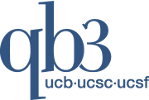Immunofluorescent localization of antigens in selected cell lines
1.0 Introduction / Description
rABs generated by the RAN group were obtained by selection against isolated transcription factor domains. As one component of our validation pipeline, the ability of each rAB to bind to it’s cognate full length, transcription factor in a cellular environment was evaluated by immunofluorescence assay in native cell lines that endogenously express varying amounts of the target transcription factor using the following protocol:
2.0 Overview steps
- 2.1 Deposit cells at a density suitable for staining and imaging
- 2.2 Fix cells by treatment with ice-cold methanol
- 2.3 Permeabilize cells by treatment with 0.25%Triton X-100
- 2.4 Block cells by 1% serum treatment
- 2.5 Stain cells with primary antibody and wash
- 2.6 Stain cells with secondary antibody and Hoechst dye and wash
- 2.7 Image not less than 100 cells using Opera high-throughput imager (Perkin Elmer) and quantitate immunofluorescence intensity in comparison to cells stained with secondary antibody alone
3.0 Materials
Glassware/Plasticware
- Perkin Elmer tissue culture treated CellCarrier plates (product #:6005550)
Reagents
- Goat serum (G9023-10mL)
- Secondary Fluorescent conjugated antibody (Human anti-rAB FITC conjugate, Jackson Labs (#109-546-097))
- Hoeschst 33342 Dye (Lifetech, H3570)
Cell lines
- The following cell lines have were used to assess endogenous expression and localization:
- ES-2, JHOC-9, A2780Cis, 3345A, A2780, HPAFII, HepG2, 293T
4.0 Cell deposition – Day 1
- 4.1 Seed cells at 5,000-10,000 cells per well
- 4.2 Swirl gently to distribute cells evenly, then incubate overnight at 37°C to allow adherence.
5.0 Cell permeabilization and fixation – Day 2
- 5.1 Remove media from wells and wash once with 1x PBS
- 5.2 Add 100 ml of 70% -20 °C ice cold Methanol (prepared with MilliQ) water per well
- 5.3 Place in -20 °C freezer and incubate for 10 minutes
- 5.4 Rinse 3x with PBS for 5min each
- 5.5 Add 100ml of 0.25% Triton X-100/PBS to each well
- 5.6 Incubate for 10 minutes at RT
- 5.7 Wash 3x with PBS for 5min each
- 5.8 At this point, cells can be stored for several days in PBS solution at 4 °C before staining
6.0 Blocking and immunostaining of non-specific binding sites on cell samples
- 6.1 Block in 1% normal goat serum/PBS for 1 hour at RT or overnight at 4 °C
- 6.2 Remove blocking solution
- 6.3 Add 100 μL of primary antibody diluted in 1% goat serum/PBS or negative control (goat serum/PBS alone)
- 6.4 Incubate 1 hour at RT
- 6.5 Wash 3x with PBS 5min each
- 6.6 Add 100 μL secondary antibody diluted in 1% goat serum/PBS with 2 mg/mL Hoechst dye
- 6.7 Incubate 1 hour at RT in the dark, and keep coverslips in the dark as much as possible from this step on.
- 6.8 Wash 3x with PBS 5min each.
- 6.9 For storage of stained cells in 96 well plates, add 100 mL of PBS and cover with aluminum foil seal and leave up to 5 days.
7.0 Quantification and data format
- 7.1 Image immunostained cells on an imaging system capable of handling 96 well plates at an appropriate and constant incident light, gain and sensitivity setting.
- 7.2 Manually inspect images to determine apparent localization of immunostained target transcription factor in various cell lines.
- 7.3 Categorization of fluorescence localization in the cell was indicated using five simple GO-based descriptors: cytoplasmic, nuclear, mixed cytoplasmic/nuclear, other, miscellaneous, or not tested.
Please send corrections, modifications and suggestions to smiersch@recombinant-antibodies.org.



